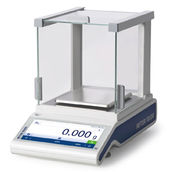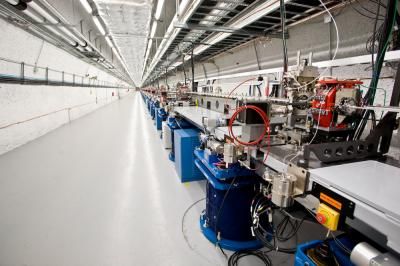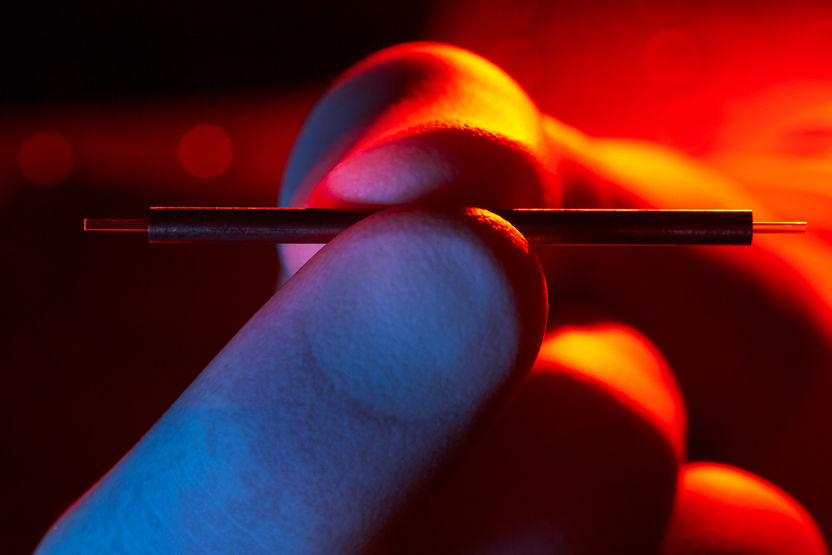To the Edge of Melting
Advertisement
Picking a relatively simple system, an international team of scientists at Stanford Linear Accelerator Center SLAC (Stanford, USA), including two members of Max Planck Institute of Quantum optics (Garching), used advanced tools to see the very first instants of change in a solid brought to the edge of melting. Their results appear in Science.
The experiment also demonstrated an important timing technique and was one of the last endeavors at the now-dismantled Sub-Picosecond Pulse Source (SPPS) - a proving ground for the more powerful Linac Coherent Light Source (LCLS), a free electron laser, which is now under construction at SLAC. Being able to agitate a material with a laser pulse in the near infrared and then immediately measure its altered state with x-rays opens up an exciting world for researchers concerned with more complex systems that could prove helpful to medicine, clean energy and other fields.
When a laser pulse strikes a semi-metal called bismuth, it disturbs the material's electrons. Because the laser energy is not enough to melt bismuth, the electrons relax back to their normal state in less than a nanosecond (one billionth of a second). But what happens in between? "We had to be quick to figure it out," said lead author David Fritz, who worked on the project as a University of Michigan student and is now an instrument scientist for LCLS. The laser, the x-ray pulses and the atoms themselves operate on femtosecond time scales.
Scientists need to know exactly when the laser fired and when the x-rays swooped through, so that the picture they assemble from the data is chronologically ordered. The authors utilized an electro-optic crystal to time-stamp the arrival of each x-ray pulse, solving a difficult problem: while lasers can be pulsed in steady, reliable intervals, x-rays from a linear accelerator cannot be controlled as well, and thus require a "stop-watch" to mark their arrival time. Dr. Reinhard Kienberger and Dr. Adrian Cavalieri from MPQ had devoted considerable effort to development of timing systems suitable for these next-generation machines.
The laser instantly changes bismuth's potential energy surface - a measure of the forces that hold solids together - thus weakening bismuth's atomic bonds. This puts the atom's nucleus out of equilibrium, like moving a marble from the center of a bowl up its sloped sides. To get back into equilibrium, the atom "rolls" to the center of the bowl and oscillates around the lowest point, like a marble before it comes to rest in the center of the bowl. The researchers measured the frequency of these oscillations to determine the forces that bind the atoms together.
The results also back a theoretical framework used to predict potential energy surfaces for systems that are in equilibrium. The framework, with simple modifications, surprisingly worked for the out-of-equilibrium bismuth system as well. This is the first time-dependent mapping of a solid's potential energy surface.
Most read news
Other news from the department science
These products might interest you

Good Weighing Practice by Mettler-Toledo
Your Concrete Weighing Quality Assurance Plan
GWP Verification service

MS-Präzisionswaagen by Mettler-Toledo
Trusted Results at Your Fingertips
Capacity from 320 g to 12.2 kg, readability from 1 mg to 100 mg

Carepacs by Mettler-Toledo
Professional CarePacs for smooth routine testing
Tweezers, gloves and other accessories for professional weight handling

XPR Precision Balances by Mettler-Toledo
Fast and Accurate Precision Weighing Even in Difficult Conditions
XPR Precision Balances / Solutions to support you with data management, traceability and regulatory compliance

Get the chemical industry in your inbox
By submitting this form you agree that LUMITOS AG will send you the newsletter(s) selected above by email. Your data will not be passed on to third parties. Your data will be stored and processed in accordance with our data protection regulations. LUMITOS may contact you by email for the purpose of advertising or market and opinion surveys. You can revoke your consent at any time without giving reasons to LUMITOS AG, Ernst-Augustin-Str. 2, 12489 Berlin, Germany or by e-mail at revoke@lumitos.com with effect for the future. In addition, each email contains a link to unsubscribe from the corresponding newsletter.
































































